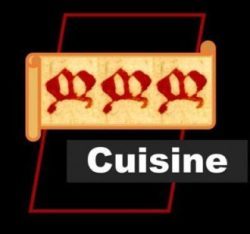Image: Lasagne fatte a mano (‘handmade lasagne’) by Dina Benedetto Ferrandina; the image has been cropped; wikimedia commons licence.
L is for lasagne! Here’s another excerpt from my comprehensive, encyclopaedic glossary of ingredients, equipment and culinary terms found in Richard II’s cookery treatise, Fourme of Cury (c.1390). This one is (mildly) controversial.
lasagne loseyns. Broad, thin pasta sheets, and also the dish named after this pasta. Lasagne ‘leaves’ are rolled out from a dough made from fine white flour (see pandemain, below) and water; these are then dried – probably only long enough to make them easier to cut into smaller pieces – before being cooked in broth or almond milk. The first of the two lasagne dishes in Fourme of Cury (no. 48, ch. 6) is almost identical to one in an early fourteenth-century Italian collection, Liber de coquina, and is essentially layers of grated cheese and lasagne. Spices are added to the cheese, and the lasagne is pre-cooked in broth, likely beef or capon. The second lasagne dish (no. 126, ch. 6) is for a ‘fish day’, a non-meat, fasting day. Instead of broth, almond milk is used and it is presented more like a soup, with the lasagne sitting in the almond milk. There is no cheese (which was forbidden on some fish days); however, saffron, a seasoning of salt and sugar, and a sprinkling of red candied coriander seeds (comfits) rescue the dish from the grave of blandness. There is a long-held, erroneous belief that medieval lasagne were rhomboid or diamond-shaped. This mistake is as a result of confusing the Middle English words loseyns (‘lasagne’) and losenge (‘lozenge’), and of the conflation of lasagne dishes with non-pasta dishes that do use lozenges, made from sugar plate or rich pastry, for decoration. For further information on this matter, see the commentary on loseyns in recipe 48.

Previous: jelly
Next: mulberries
If you would like to support my independent research and creative work please consider buying me a coffee.


2 thoughts on “Medieval culinary glossary: lasagne”